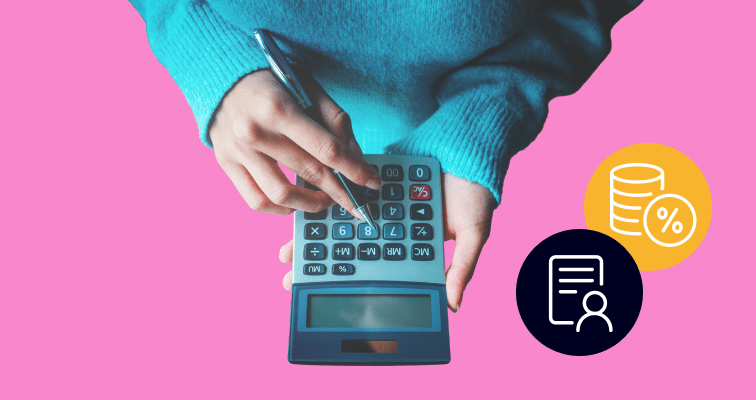Day trading is a form of investing in which you open and close positions on the same day. You can begin day trading in Australia by opening an eToro account and researching the trading strategies you wish to use in your plan. Then, you can fund your account and begin setting “buy” and “sell” positions.
Day trading on international stock exchanges can be a great way to get involved in a variety of markets, but it differs from more traditional investing in many ways. So, what is day trading, and how can you day trade in Australia?
Day trading might sound pretty simple to some people. Those who are unfamiliar with day trading may assume that it is just trading stocks, forex, crypto or other assets during the day; however, this is incorrect. Read on to find out how you can start day trading, and our top tips and tricks to help you begin.

What is day trading?
Day trading is a form of investing in which you open and close positions on the same day. It can be looked at as the opposite of longer-term investment strategies. Day traders tend to try to take advantage of markets and assets that experience a lot of volatility or feature a lot of
Day trading is legal in Australia, and same-day trading can be profitable for some. However, as with any investment strategy, it comes with its own set of risks. If you are going to be a day trader, you might want to think about some of its major features and requirements, including:

Day traders need to be hands-on, as the windows in which they operate are relatively small. That means more time spent on trading platforms and tools.

Because of these small windows, day traders need to be able to make buying and selling decisions quickly to take full advantage of market movements.
This quick decision-making is combined with a strong focus. Capitalising on favourable market moves requires strong attention to detail.

Generally, day traders perform a larger number of actions with the goal of making a lot of small profits that add up over time. But it is important to remember not to make trades just for the sake of being active.

Any type of investing or trading has some level of risk, and day traders must be willing to take numerous risks each day.
How is day trading different from other forms of trading?
Day trading is different from other forms of trading. Instead of buying assets with the view of holding onto them for long periods of time before selling them (hopefully at a gain), day traders generally sell their assets the same day they buy them.
Day trading is very active. This sets it apart from long-term investing, which is more passive. Day traders are actively buying and selling and monitoring markets most days, while other investors will often only buy or sell occasionally.
Day traders also tend to use different tools to make decisions. Many rely on
Tip: Day trading is not easy and by no means a guaranteed moneymaker. Research the market, use a strategy and be patient.
How can you start day trading in Australia?
For those looking to start day trading, you should build a foundational strategy by preparing and scheduling your trades. It’s imperative that you have the correct setup with useful tools, as well as sufficient funds to trade and cover initial losses. There are also other considerations.
| Tip | Explanation |
|---|---|
| Have the right setup | You want to make sure that you have the right tools. Ideally, you’ll have two monitors, with enough real estate to have multiple windows with charts and your trading platform up at the same time. A comfortable chair is a good idea due to more screen time. |
| Find a strategy | There are plenty of day trading strategies out there, including popular ones such as buying the dips, fading, price averaging and scalping. |
| Start small | Even after you have taken some time to work on your strategy and you are ready to start using actual capital, it is a good idea to take it slow. Start with one type of asset, whether it is investing in stocks, exploring the crypto market or currencies investing. Also, consider sticking to one strategy to start with. |
| Start with sufficient capital | It is a good idea to have enough capital to start with to overcome initial losses. While you still want to stay disciplined and stick to your strategy, there is no guarantee that you are going to see success early. |
| Be sensible | As with any type of investing, you only want to risk what you can afford to lose if things don’t go well. |
| Set a schedule | As we mentioned above, day trading is very time-intensive and takes a lot of effort and dedication. Having a schedule in which you set aside a chunk of hours each day is a good way to get started. |
| Choose a day trading strategy | Whichever strategy you choose, it should set boundaries to help guide your trading. These may include when you trade, assets traded, and your risk tolerance. There are many different day trading strategies to choose from, allowing you to find one to suit your trading style, personality and investment goals. Some common day trading strategies include: –Buy the dips: Using pullbacks as an entry point, day traders use this strategy in the hope that the asset value will rebound higher. –Price averaging: Helping to potentially smooth out price fluctuations, the price averaging strategy sees day traders add to their trade in increments over a period of time. –Scalping: Involving many trades per day, this strategy aims to take smaller, yet more frequent, profits. Day traders using this strategy require strict exit strategies to help reduce potential losses. –Momentum: Focusing on signs of a trend reversal, day traders using this strategy look to invest in assets at the very start of an uptrend, selling as soon as the rally appears to be over. |
Day trading crypto
In recent years, day trading

So, why is day trading cryptoassets becoming more popular?
- It is a market that features a lot of volatility and liquidity. This means that prices are constantly fluctuating, and there are a lot of people buying and selling.
- The crypto market is always open. It is not regulated like exchanges, so traders in Australia do not have to worry about time zone differences in the same way that they would if they were trading on stock exchanges located in other cities around the world (more on that below).
Tip: Factors that affect the volatility of markets include the news cycle, economic data and research reports. In the crypto markets, the same factors have an impact on cryptoassets.
How does day trading work on global stock exchanges from Australia?
Day trading in Australia on global stock exchanges shares a lot of similarities with day trading on the ASX. However, there are a few important factors to bear in mind, including time zone differences, currency and international differences.
| Time zone differences | ||
|---|---|---|
| Perhaps the main thing to remember when day trading on global stock exchanges from Australia is time zone differences. Popular international exchanges such as the New York Stock Exchange and the London Stock Exchange have opening and closing hours that vastly differ from normal working hours here in Australia. | Another thing to consider is currency conversion fees. For example, if you are buying shares from the US, they are purchased in US dollars. You will need to have a good handle on the exchange rates and any currency conversion fees incurred for purchasing and selling. | Some of the benefits of investing in the ASX do not apply to investing in international shares. These include different rules regarding franking credits and dividends, as well as potentially different tax requirements. |
What should you know about day trading and tax in Australia?
Taxation on day trading in Australia works much the same as taxation on longer-term investments in stock, forex, cryptoassets and even property. Day traders are considered “traders” for tax purposes, as opposed to “investors” who trade on a less regular basis and hold their positions for longer.

You are responsible for paying
Day trading activities can also be considered share trading as a business by the ATO. This is determined based on the goals of your day trading, your trade volume and how you organise your day trading.
If you have more questions, see if the Australian Tax Office (ATO) can help, or contact a professional accountant who specialises in day trading tax. You can also learn more about digital currency tax with our guide to preparing your crypto tax return.
What should you remember when day trading?
When day trading, you should consider your psychological state, as this can affect your decision-making and rationale. Similarly, setting up a few non-negotiable rules is a good way to make sure that you stay committed to your goals and mitigate risks.
Successful investing takes time, discipline and patience.
Warren Buffett
If you want to invest like Buffett, keeping these principles at the forefront of your strategy can help you avoid emotion-based moves. If you are new to day trading or are simply looking to brush up on your skills, there are some other important things to remember each time you trade.
- Day trading requires concentration, so ensure that you’re in the right frame of mind. If you’re not in the right mindset, your decisions may not be as carefully considered as they should be.
- Good opportunities may arise, and you may be tempted to adapt your strategy, but it’s important to stick to your rules and boundaries.
- Risk is involved in all stock trading, so look into risk management tools such as limits and stop losses, and have the confidence to sell assets when the performance is less than ideal.
- Although you may hear of other traders discussing their recent wins, do not let their opinions influence your approach. Their rules and boundaries may not align with yours.
- It takes time to learn how to day trade, so do not be afraid to practice. You could try using a demo account, which will help you to develop and test your strategy before investing in your own capital.
Final thoughts
Day trading can be an exciting investing activity for those who have the right mentality and technical tools. However, it might not be for everyone, especially those who are used to holding positions with a longer-term outlook. Most importantly of all, do not invest more than you can afford to lose.
Visit the eToro Academy to learn more about trading.
FAQs
- What do you need before you start day trading?
-
Before you start day trading with real money, you need to have strong knowledge of day trading terminology and technical analysis, and a strategy that has been backtested and proven profitable.
- How much money should you have when you start day trading?
-
This all depends on your goals. Start by asking yourself what your trading income goals are. From there, you can use percentages of your account balance to make profit goals and risk parameters for your trading. Never invest more than you can afford to lose.
- Is day trading illegal?
-
Day trading may not be illegal, but it can be risky. Before you start day trading, ensure that you weigh up the risks and consider your current financial situation.
This information is for educational purposes only and should not be taken as investment advice, personal recommendation, or an offer of, or solicitation to, buy or sell any financial instruments.
This material has been prepared without regard to any particular investment objectives or financial situation and has not been prepared in accordance with the legal and regulatory requirements to promote independent research. Not all of the financial instruments and services referred to are offered by eToro and any references to past performance of a financial instrument, index, or a packaged investment product are not, and should not be taken as, a reliable indicator of future results.
eToro makes no representation and assumes no liability as to the accuracy or completeness of the content of this guide. Make sure you understand the risks involved in trading before committing any capital. Never risk more than you are prepared to lose.


